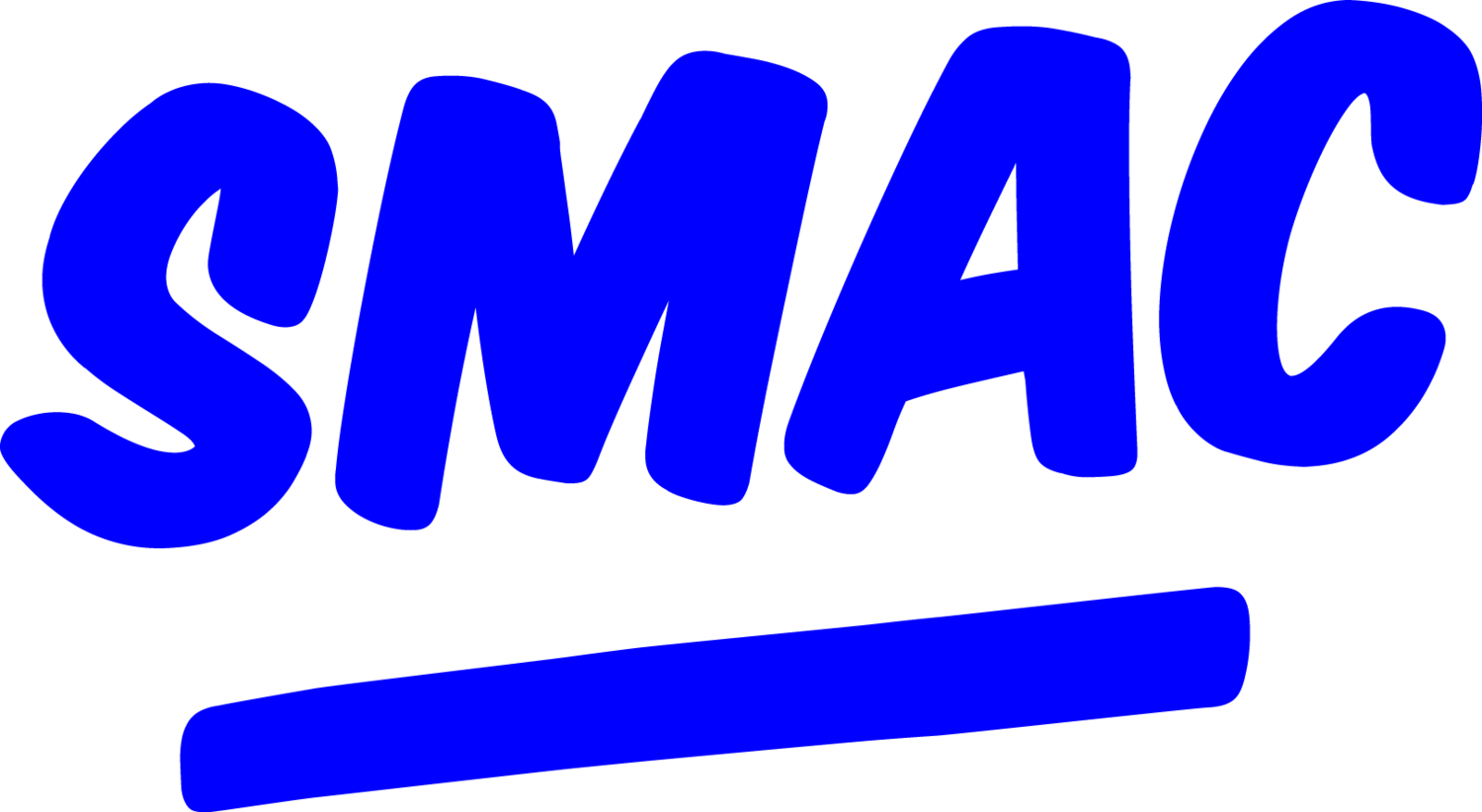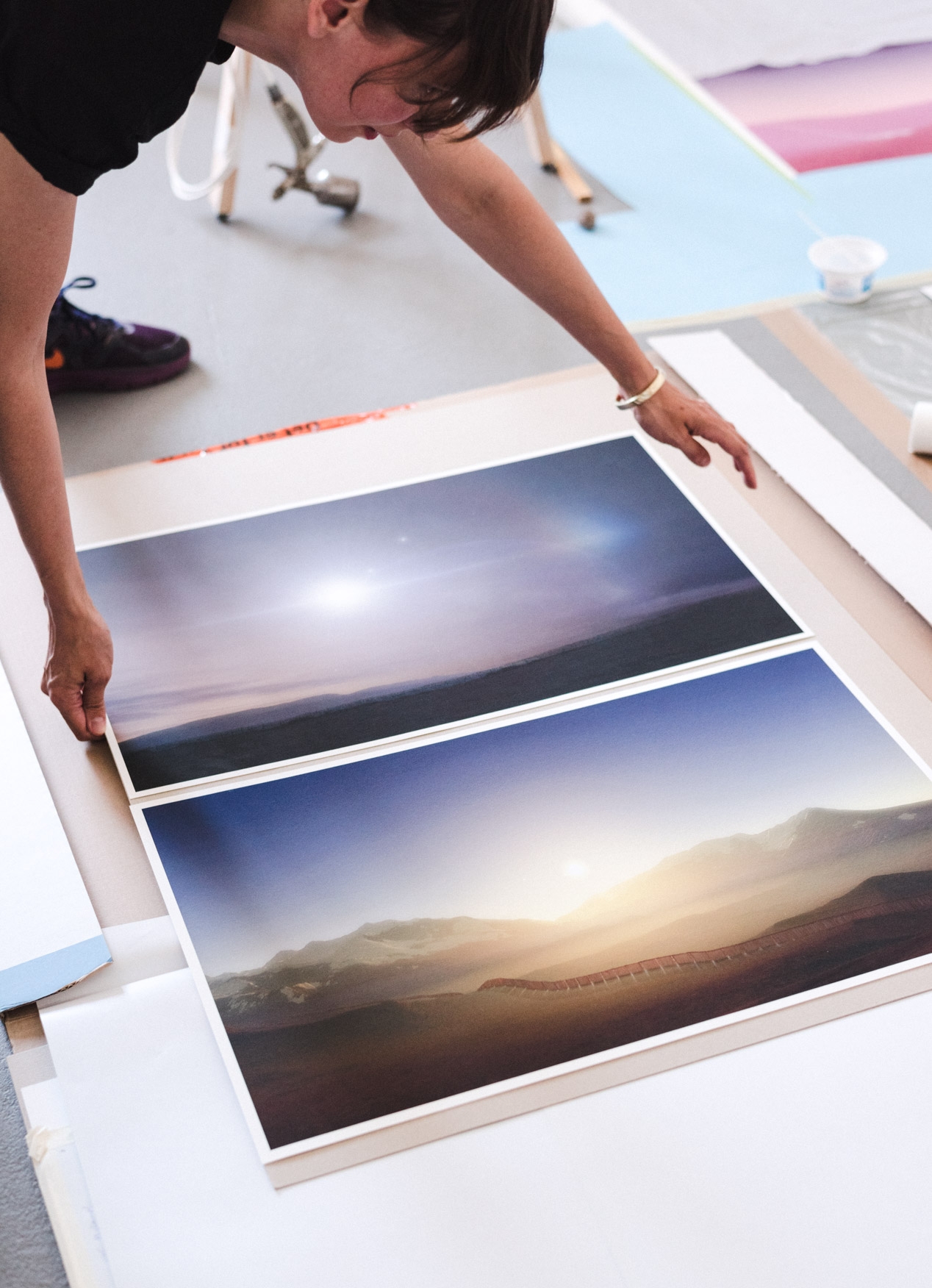Interview with Anina Brisolla
Described as digital painting and collage, the work of Anina Brisolla transcends the various media she works in—from video to installation—to question the visual language of established institutions. Recently, she has targeted space exploration and mass media depictions of maternal stereotypes through her complex layerings of found images.
Her recent series ‘Prospect’ takes a critical view of NASA and ESA space images, which are often heavily rendered to look like cheesy real estate ads. By enhancing this aesthetic with her own image-layering and over-drawing, she considers the privatization of space as the new frontier of capitalism. Brisolla’s exhibition at SMAC assumes a cosmic outlook to emphasize the looming threat represented by the proliferation of fences, walls and borders worldwide.
SMAC: Let’s talk about your series ‘Prospect’, which was recently published in the ARCH+ issue on Property, and which you’ll be showing at SMAC.
Anina Brisolla: I was fascinated by these images of space with the title “A New Earth-Like Planet Discovered”. I thought: if there was life on another planet, what would happen first? The series is a bit of a caricature or exaggeration. I started to draw over the images I found. I also did some research into walls: how does the wall in Gaza look? How would Trump’s wall on the US-Mexico border look?
I find the aesthetic of real estate renderings that NASA or ESA goes for very interesting and appealing. It’s really kitschy and all their images have this quality. When I was considering the exhibition at SMAC, I thought about how when we think of space we are always somehow stuck in the 70s. The aesthetic is stuck to that period.
But now we have the new space economy, and maybe we should stop romanticizing it and consider what the implications are. All the guys from these huge companies, like Google and Tesla, are now all into space research and investing their money.
Is it like a new form of colonialism, creating enclosures of common space?
It used to be that space was common property. There was a treaty from the 60s proclaiming that space belongs to all. But in 2015 a new treaty was written, saying that it was possible for companies to exploit space. Luxemburg was the first country in Europe to make a space law, regulating commercial space exploration.
The way I see it, you could use a fence, a cultural signifier, to explain the whole history, in a way.
I’m happy that ARCH+ picked up my images in the context of their Property issue as I think it gives the topic a broader audience and more room for discussion.
Is there an environmental politics behind the works?
It’s starting to go more in that direction. I’m realizing that politics, economics and environmental issues all go hand in hand. I might have been more apathetic about environmental politics in the past but at this point it seems crucial to world politics in general.
“If there was life on another planet, what would
happen first ?”
On your website you’re described as a video artist. Tell us about some of the different media you use.
Yes, that’s quite an old text but it’s also how I feel because that’s where I come from and what I was mainly working on.
‘Landnahme’ was the last video I did in 2012. It’s an animation of a drawing. I came to a point when I thought I might be done with that medium. When I started the ‘Prospect’ series I thought it was perfect to come full circle back to the ‘Landnahme’ topic. I want to show this video on the ground floor at SMAC. I am working on another video but thinking in the end I might show ‘Landnahme’ as it fits so well with the other images.
At some point after I decided, around 2012, that I could also do other forms of media. I allowed myself to experiment more and not be limited to one medium. In the end, I’m an artist and I can do different things. It was good to focus on one thing for about a decade, but it was really liberating to expand to installation and other media as well.
“Politics, economics and environment issues all go hand in hand”
Let’s talk about the process you use to create your works.
I have a topic and I gather an archive of images. From these, I have a substrate that forms the base of the works. I collage photos and then draw and photoshop more layers. This is often done on my computer, using a tablet.
For a project like ‘Landnahme’, I have a collection of images that are the bones of the work, which you might not see in the final product. I have a concept and then I freestyle a bit: there’s a lot of rendering, the pace and the timing are very important.
For every project, I have loads of images. It takes a long time. I go further and further until the base image is almost unrecognizable. That’s how I work with almost every project: I pull from an archive of images.
For the ‘Prospect’ series I printed very large-scale images to draw over. It’s so different for me, working with these big formats. You can never manage to see the whole thing. With the smaller ones you have a certain amount of control. I used ink and watercolour to draw on the large images.
What are some other works that use this same process with a different topic?
I was invited to contribute to an exhibition recently at Bethanien, called ‘MUTTER. SCHAFT. NEU. DENKEN’, exploring the expanded field of motherhood. My work looked at stock photography, stereotyping women: happy mothers and stressed mothers. The happy mother images I found were almost only white, blond young women and the stressed mothers were much more diverse, all races and ages and with many more children. I layered 18 images on top of each other and what came out looks quite like the Virgin Mary.
The process or approach is the same but sometimes a sculpture is better than an image to transport a certain concept, that’s why it’s important for me to be fluid between media.
“I allowed myself to experiment more and not be limited to one medium.”
You made a model for your exhibition at SMAC. What will be included there?
Yes. I will have these four images from ‘Prospect’. Opposite the drawings, I have an installation of 40,000 black plastic beads on a string. It functions as a scale measurement, called ‘8 Milliarden’, to show the actual population of the world. You’ll see the pure mass of people piled there.
On the way down the stairs, there’s another black latex installation like my previous work ‘Passage’, hanging slightly threateningly above the visitors’ heads. Downstairs, there’s a projection screen which will show either ‘Landnahme’ or the new video I’ve been working on.











